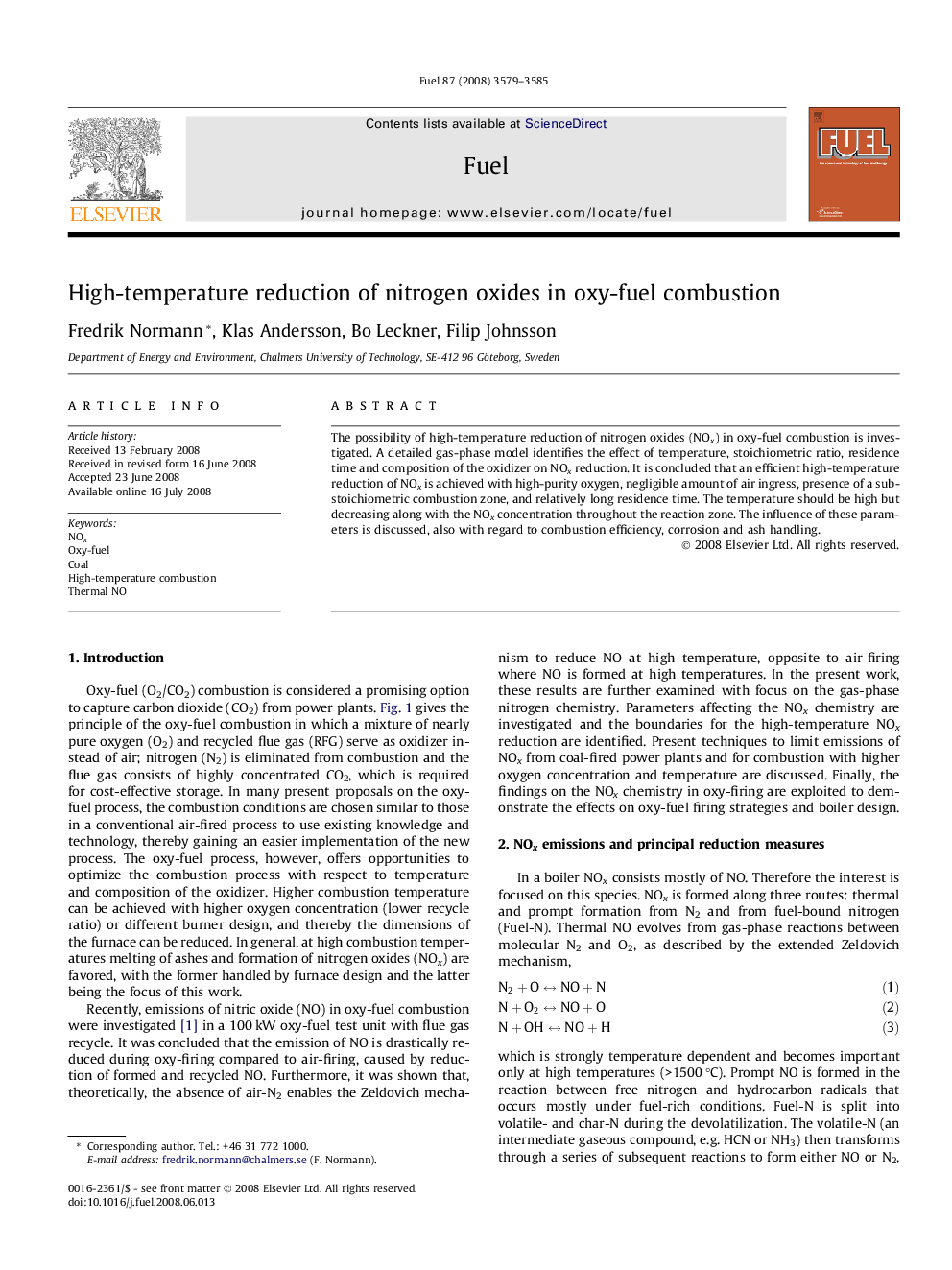| Article ID | Journal | Published Year | Pages | File Type |
|---|---|---|---|---|
| 207715 | Fuel | 2008 | 7 Pages |
Abstract
The possibility of high-temperature reduction of nitrogen oxides (NOx) in oxy-fuel combustion is investigated. A detailed gas-phase model identifies the effect of temperature, stoichiometric ratio, residence time and composition of the oxidizer on NOx reduction. It is concluded that an efficient high-temperature reduction of NOx is achieved with high-purity oxygen, negligible amount of air ingress, presence of a sub-stoichiometric combustion zone, and relatively long residence time. The temperature should be high but decreasing along with the NOx concentration throughout the reaction zone. The influence of these parameters is discussed, also with regard to combustion efficiency, corrosion and ash handling.
Keywords
Related Topics
Physical Sciences and Engineering
Chemical Engineering
Chemical Engineering (General)
Authors
Fredrik Normann, Klas Andersson, Bo Leckner, Filip Johnsson,
